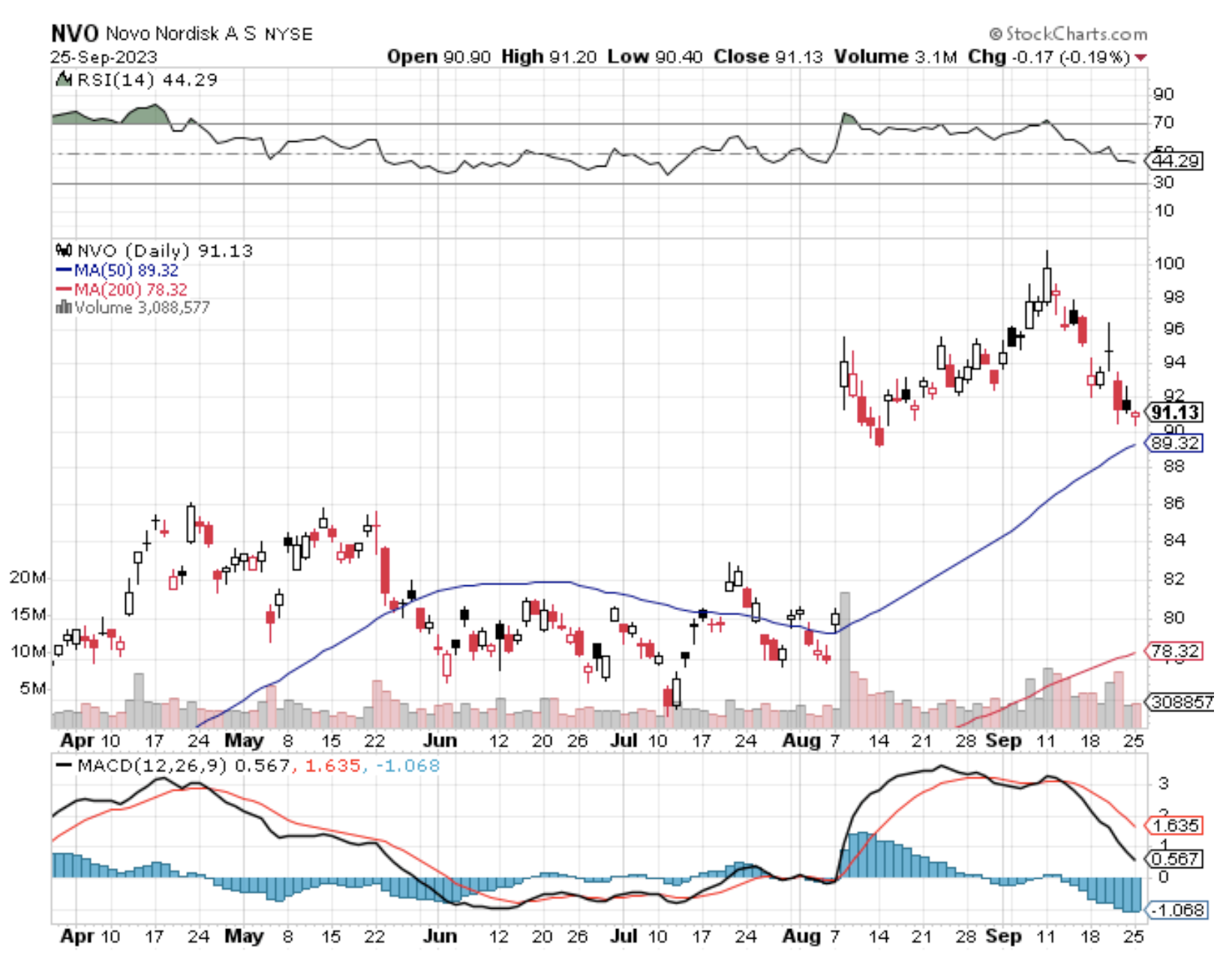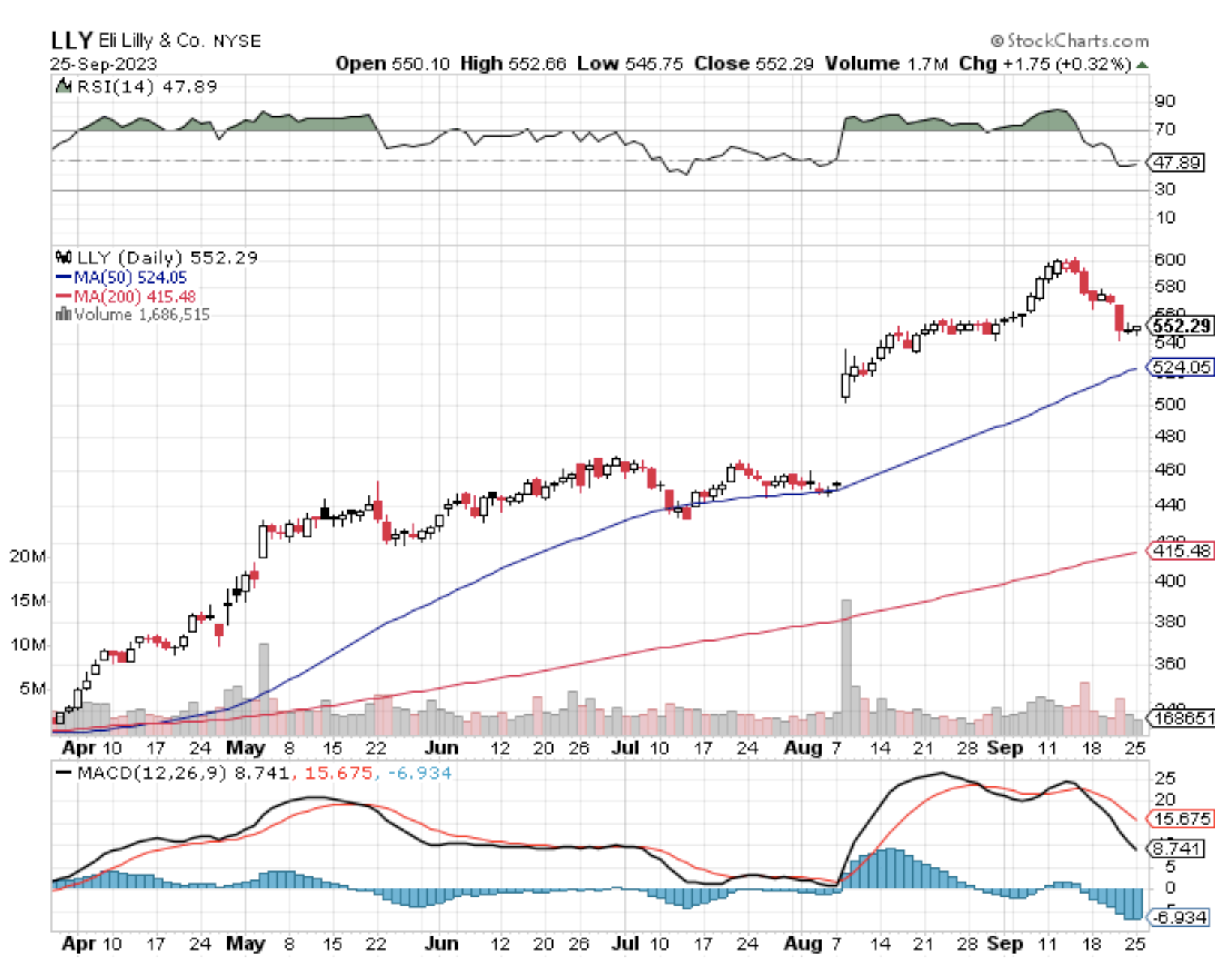In a world teetering on the brink of healthcare overload, the emergence of Novo Nordisk (NVO) and Eli Lilly's (LLY) revolutionary obesity drugs, Ozempic and Wegovy, is akin to sailing in uncharted waters. These drugs are heralded as the harbinger of unprecedented advancements in biotechnology and healthcare, but they also cast shadows of potential financial turmoil on the horizon.
The air is thick with anticipation as Wall Street analysts predict a financial windfall for the drugmakers, with the drugs promising up to 20% body weight reductions and a significant decrease in the risk of heart attack or stroke.
The demand is skyrocketing, and the projections are staggering. The obesity market is poised to grow substantially, with a forecasted compound annual growth rate (CAGR) of 31.3%. However, lurking in the shadows is a looming healthcare crisis, a silent specter waiting to engulf insurers, employers, and government programs in a financial maelstrom.
GLP-1 receptor agonists are more than just another pharmaceutical innovation; they are a beacon of hope for the 40% of U.S. adults grappling with obesity. But, the beacon comes with a hefty price tag, with Novo’s Wegovy listed at over $16,000 a year.
By 2030, the spending on GLP-1 obesity treatments is anticipated to reach an astounding $50 billion, suggesting a financial storm likely to peak between 2025 and 2027.
This turns the Medicare landscape into a battlefield, with debates raging over the ban on paying for weight-loss drugs and the potential ramifications of their inclusion. It’s a complex dance, where the potential benefits of combating obesity are entwined with immediate financial challenges, creating a paradox that could reshape the foundations of healthcare economics.
Meanwhile, Medicaid, the safety net for approximately 87 million Americans, is caught in the eye of the storm as well, with the surge in spending on GLP-1 drugs from $547 million in 2021 to $1.1 billion in 2022 painting a vivid picture of the impending financial turbulence.
The complex interplay between state eligibility prerequisites and legal challenges underscores the intricate process of assimilating novel pharmaceutical breakthroughs into prevailing systems.
The employer-based insurance market is walking a tightrope, balancing competitive benefits and premium affordability. The introduction of the new obesity medicines is a catalyst, intensifying the existing tensions and raising questions about the sustainability of covering new medications without robust clinical evidence.
The industry is in a conundrum, with the need for expansive coverage clashing with the realities of cost management.
This narrative is not just a tale of numbers; it’s a human story, interweaving the lives of patients, taxpayers, and the evolving pharmaceutical terrain. It’s about the omnipresent advertising campaigns and the cultural phenomena surrounding these drugs, reflecting societal shifts in perceptions and expectations regarding healthcare solutions.
Novo Nordisk and Eli Lilly are at the forefront of this transformation, advocating for expanded coverage and emphasizing the long-term savings associated with addressing obesity. The discourse is filled with contrasting perspectives, with companies like Cigna Group (CI) and CVS Caremark (CVS) exploring the balance between clinical validity and financial viability.
The journey is fraught with uncertainties and challenges, with the potential rise in premiums and the quest for pricing solutions being critical elements in the unfolding saga. The healthcare system is at a crossroads, with the long-term benefits of obesity drugs poised against the immediate financial ramifications.
The emergence of Ozempic and Wegovy is a mirror reflecting the complexities and intricacies of the biotechnology and healthcare sector. The balance between innovation and sustainability is a delicate one, and the path ahead is interwoven with threads of hope, anticipation, financial prudence, and societal well-being.
Overall, the burgeoning obesity market presents a compelling case for investment in Novo Nordisk and Eli Lilly. The transformative potential of their weight loss drugs is substantial, promising to reshape the contours of obesity treatment. While the road is interspersed with uncertainties and challenges, the prospective growth and escalating demand for these innovative treatments underscore a lucrative opportunity. I suggest you buy the dip.



